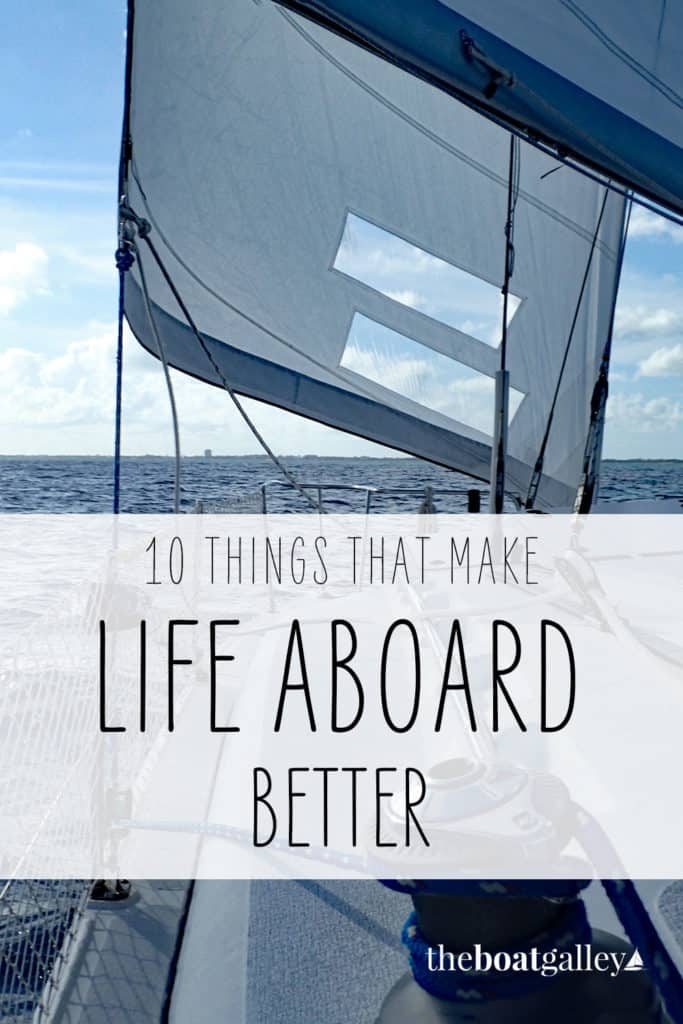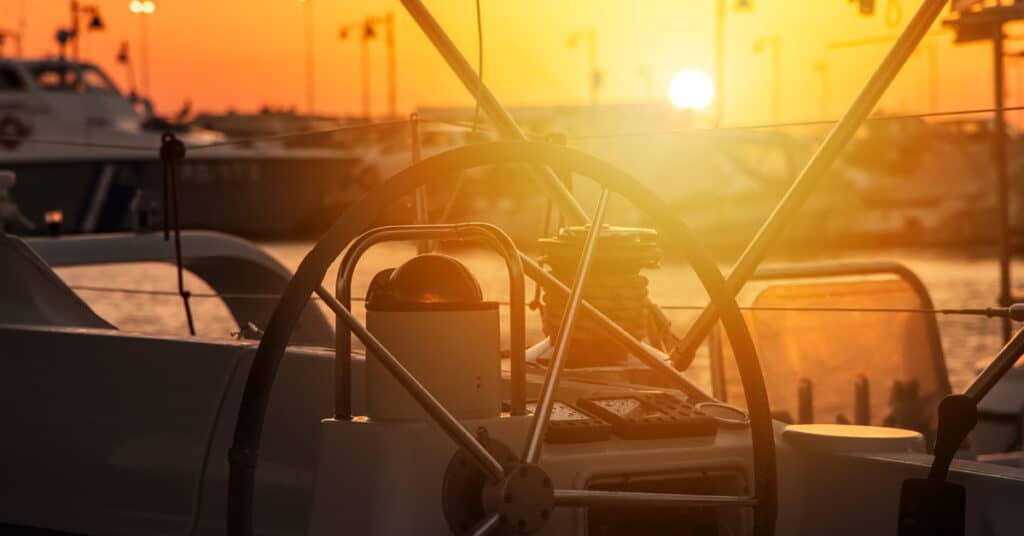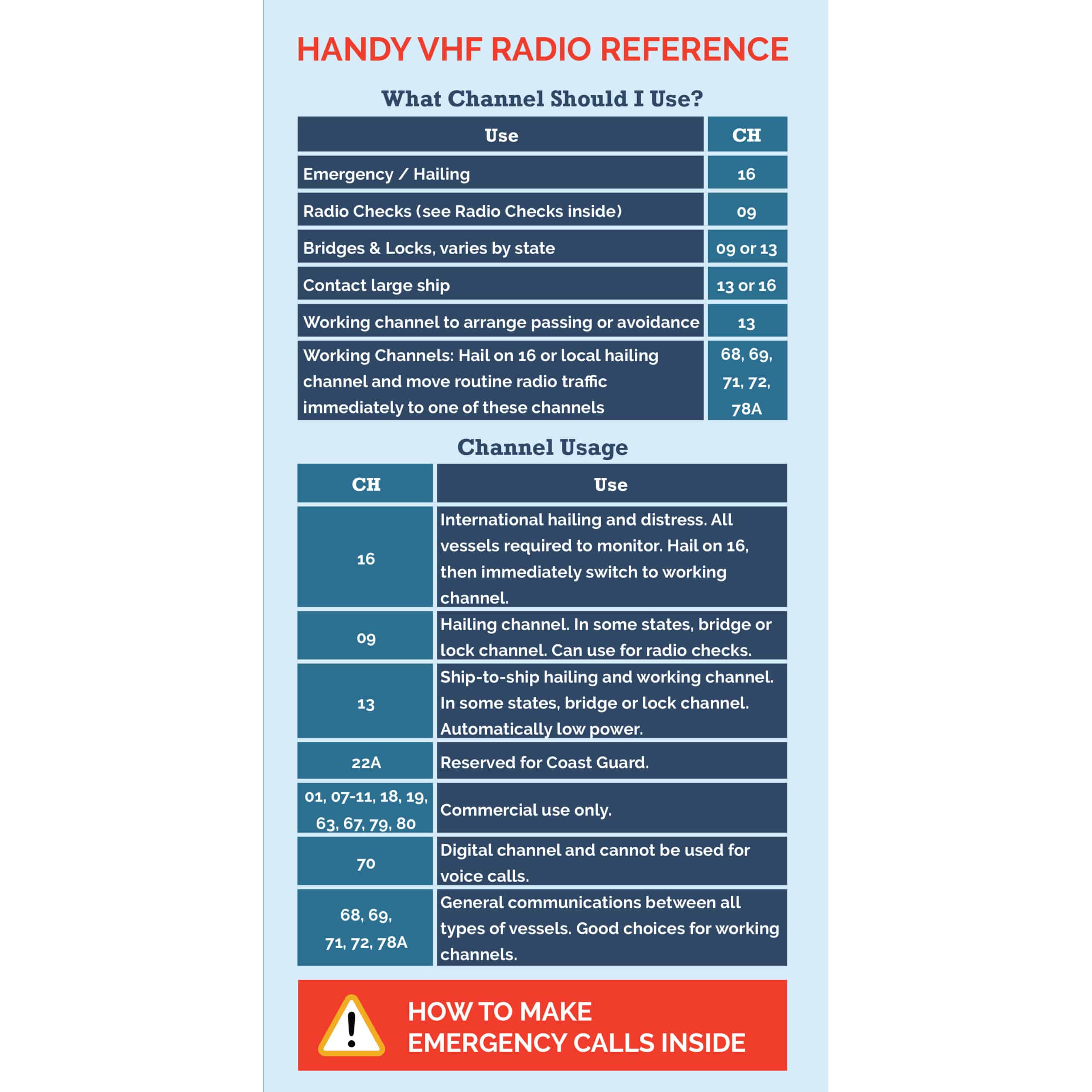
Okay, life on a boat is pretty good. But these ten things make it even better.
- Power. Constantly having to limit your electrical usage is not a nice lifestyle. We had 453 watts of solar power on our previous boat in the Sea of Cortez (very sunny) and then added a Honda generator. While we were still careful not to waste electricity, there was enough power for me to write and edit photos on the computer, to have plenty of light to read by in the evenings, for a really bright work light when dealing with problems, running the refrigerator 57 minutes of every hour in the worst of the summer heat, running enough fans to be comfortable . . . and for Dave to make microwave popcorn when he wanted to. Read about our solar power on our current boat.
- Great mattress. If I don’t sleep well, nothing’s going to go well. Previous owners had put a custom Handcraft Mattress on our previous boat and it was wonderful. They aren’t cheap, but it’s a very worthwhile “luxury.” Actually, to me, a good night’s sleep is not a luxury but a necessity — sleep deprivation is the seed of many poor decisions and cranky people. We did things a little differently on our current boat — read how we sleep well.
- Dinghy 2.0. Dinghy 1.0 was a roll-up with relatively small tubes and a 6 HP motor. No way would it plane and it was downright scary when we had to return to the boat through white caps. Dinghy 1.5 saw a new-to-us 8 HP motor. Better, but still no planing and then the motor started becoming unreliable. It limited where we hiked and snorkeled. When we finally bit the bullet and got Dinghy 2.0 — a new 10′ RIB with big tubes, new 15 HP outboard and a crane for the motor, the difference was amazing. We could go anywhere we wanted, we stayed a lot drier, it planed, we could carry a lot of gear, parts and provisions — basically, a huge improvement in our lives! (We did something similar on our current boat.) Oh yeah, another big upgrade on the dinghy was getting Adventure Marine Quick-Release Wheels (unfortunately, these are no longer made) — they are large enough to actually work on beaches (small wheels don’t work on sand) and they are simple to flip up or down . . . both features had been sadly lacking in the wheels that Dinghy 1.0 came with. Another item that is not cheap, but if you’re going to get wheels — they’re almost a necessity in the Sea of Cortez — get ones that are up to the task.
- Spade anchor and powerful electric windlass. More in the “we sleep well” category. The anchor was oversized but we didn’t move. Ever. Twice we were in situations where boats anchored next to us dragged and went on the rocks when the weather turned nasty. Yes, we’d picked the wrong anchorage and hadn’t bailed out when we should have — but the Spade kept us safe. Equally important was a powerful electric windlass installed by previous owners — with it, we anchored further from shore, re-anchored if we didn’t like where we were sitting, and we able to bail out a few times when winds switched and we were suddenly on a lee shore. 2016 NOTE: On our new boat, we have a Mantus anchor — nothing against the Spade, but read why here.
- Watermaker. In the Sea of Cortez, water can be hard to come by — and we hate to have to go to town any more often than necessary. Having a watermaker meant that we were very self-sufficient and never had to plan our itinerary by where we could get water. And while we watched our water consumption, not having to ration it made for a much nicer lifestyle. Our waterwater was an old HRO — newer ones are much more efficient, so I’m not really recommending a particular model . . . and I realize that a watermaker is not right for all boaters. But if you’re cruising full time in remote locations, it makes a huge difference. We have a Rainman high capacity unit (30 GPH) on our current boat and love it even more!
- Underwater camera. Initially, I got a waterproof camera just to be able to keep it in the cockpit, take it in the dinghy, use it in the rain and so on without worrying about it — to me, this was huge to be able to really get cruising photos and the reason I’d recommend everyone getting a waterproof camera (you can’t get photos if the camera is locked away in a Pelican case). Then I started taking photos while snorkeling and diving and discovered a whole new hobby. My current one is an Olympus Tough TG-4 and I highly recommend it.
- Keen Newport H2 Sandals (link to Amazon). I’ve worn these since 2006 and they are simply the best shoes I’ve found for warm-weather cruising. They’re designed to go and in of the water — they don’t stretch, they don’t rub raw spots, and the toe protector does exactly that. Baja is filled with thorns and these were the only sandals I ever found that they couldn’t pierce (woo-hoo!). In 2008 I finally convinced Dave to get a pair instead of the Tevas he’d been wearing and now he’s a convert. 2017: we’re still wearing these.
- Long swim ladder. Our first boat came with a lovely teak swim ladder . . . with the top step about a foot above the water. Luckily the first time that we put it over and then jumped in, there was another boat nearby with a dinghy in the water to pick us up and help us get back on the boat — no way could we make it up that ladder. We quickly bought a new long one — it needs to have at least two steps underwater — and it got a lot of use. Being able to jump over the side — several times a day in hot weather — is one of the true joys of cruising!
- Track-mounted whisker pole. A whisker pole allowed us to sail a lot more and having it mounted on a track on the mast made it easy to use. So many boats with a whisker pole have them on the deck (yeah, it’s cheaper not to do the track) and then never use them because it’s such a pain to handle pole. We could still use ours when it was blowing over 30 knots with no danger to either of us. It was also great for hoisting the dinghy. (The link is to my 2006 Cruising World article about installing and using the pole.)
- AirLine Hookah (link to AirLine site). We originally thought we’d use it for diving, but we quickly found that in the Sea of Cortez we preferred to snorkel. But the hookah was essential for being able to clean the bottom of the boat when we were away from towns and divers. We’d bought the AirLine unit because it was gas powered and we thought we’d use it away from Que Tal. There are also battery-powered units that would be just fine if you only intended to use it for bottom cleaning — and for our current boat, we bought an electric AirLine hookah that we can run off the Honda generator. Read my article about DIY bottom cleaning if you’ve never done it yourself — save yourself the mistakes I made!
Bonus item–one more item that I really love:
- Polarized Transitions Lenses in my glasses — they’re not cheap but having polarized glasses AND not having to change between clear glasses and sunglasses is priceless. And yes, they’re lineless bifocals, too.
Flatten the learning curve with practical how-to info that gives you the confidence to step into life aboard.
Start Learning Today

Carolyn Shearlock has lived aboard full-time for 17 years, splitting her time between a Tayana 37 monohull and a Gemini 105 catamaran. She’s cruised over 14,000 miles, from Pacific Mexico and Central America to Florida and the Bahamas, gaining firsthand experience with the joys and challenges of life on the water.
Through The Boat Galley, Carolyn has helped thousands of people explore, prepare for, and enjoy life afloat. She shares her expertise as an instructor at Cruisers University, in leading boating publications, and through her bestselling book, The Boat Galley Cookbook. She is passionate about helping others embark on their liveaboard journey—making life on the water simpler, safer, and more enjoyable.










Tammy Kennon says
Thanks for playing along, Carolyn! These are great.
Shirlee Smith says
Great list! I agree with everything and have bookmarked this for next time we go cruising. I prefer the Keen Venice H2 sandals, but that’s a small difference.
Mid-Life Cruising! says
Thanks for the great tips! Glad to hear your thoughts … and those quick-dry towels and shoes are something we’ll have to check into.
Martha says
These are great. I have found the problem with my glasses so I’ll definitely look for Transistions next time I replace my glasses.
Carolyn Shearlock says
There is now another version of Transitions that includes polarizing when the lenses turn dark. I literally just got a pair two days ago. They’re very new, I was the first person outside of the staff to get them at my eye doctor’s. They are also quite expensive but I was able to get a discount by being willing to report back on how I like them and answer a bunch of questions. So far I like them very much, they have a much larger usable portion of the lens (it’s a whole new lens technology) but I haven’t used them around the water yet (we’re in the middle of a blizzard here . . .). They come with a certain amount of scratch resistance, but you can get an extra anti-reflective/scratch resistant coating for an extra $125 or so that gives a two-year warranty — if your lenses get scratched, you get new ones free. I didn’t opt for that, and am wondering if I should have . . . scratched lenses are usually why I have to replace them every 2-1/2 years or so. But they were already expensive and $125 more???
Sharon Jacoby says
Where did you get your swim ladder? We are having trouble finding one long enough.
The Boat Galley says
I think it was West Marine, but it was in 2003. I don’t see it there with a quick look, but I’m just running out for an appointment. I’ll do some more checking around when I get back. I remember that it was hard to find one long enough.
Sharon Jacoby says
Thank you ! That is what we are running into.
Beth Anderson says
I added an extension to mine, purchased through West. It was about $100 and well worth the money.
Lupari Sue says
Great ideas wholeheartedly agree with power, matress and dinghy. We have 1000 litres of water. So don’t need to fill up very often.
CherylAnn Falconer says
Good tips !!
Jim Jennings says
I love this article and I don’t cruise. I only dream about it!
The Boat Galley says
Thanks!
Sharon Jacoby says
Thank you !
Anne Marie Nielson says
Great article, and embedded one on bottom cleaning a beauty.
Ken says
1. Running the fridge for 57 minutes an hour means that the insulation is woefully inadequate. 400 odd watts is plenty of charge capacity so beef up your house battery by tossing those fancy sealed batteries and installing six 6V golf cart batteries instead. Don’t know about Mexico but Bahamas, Greater Antilles and the Eastern Caribbean has plenty of cheap local water and adequate deck caught rainfall to supply all of the water that a couple might wish without resorting to an energy sucking watermaker. Use foot pumps instead of pressurized water systems and skip the fresh water shower or rinse after a saltwater seabath in the warm ocean. Dry quickly with your poly towels, the salt actually agrees with our skin.
Most cruisers who are stuck in port extra days are waiting for watermaker and generator parts.
We agree. A RIB with a 15hp Yamaha rocks. Also spade (Rocna) anchors on all chain, long ladders and a Hooka for cleaning the bottom…plus solar beats mechanical wind power generation any day. Some of the Keens do delaminate quickly under normal use.
A $220 GoPro camera will take astonishing hi-res stills and HD video, all with a waterproof diving housing with comes with the GoPro at no extra charge.
Carolyn Shearlock says
Hi Ken!
As to the refrigerator, the 57 minutes an hour was when outside temps were 110 degrees and water temp close to 100 in the anchorage. Actually, our refrigerator did better than those of many others there . . . there’s just always one week of really nasty hot weather in the Sea. And yes, we did use golf cart batteries. And we did have sufficient power for our lifestyle.
As to your comments on having a watermaker, the Sea of Cortez is a desert area, so no, you can’t rely on catching rainwater. And many local communities don’t have water to sell. Our watermaker worked wonderfully well for us, was one of the few pieces of gear that never broke down in 7 years of cruising. No, a watermaker isn’t for everyone, everywhere. But having a sufficient supply of fresh water makes living aboard a lot better, no matter how you do it.
Chuck says
Comprehensive and super-informative, as always – thank you, Carolyn!
John Meyer says
Hi Carolyn – While reading the first paragraph about power, I thought you might find this useful. Last week I purchased an LED 2000 Lumen work light made by SnapOn that is SUPER bright, runs cool and only uses 25 watts. It’s a vast improvement from the halogen light I was using. Got it at Costco for $35 (have seen others saying they got it for as low as $30). Dave might be interested. John
Beth Holland says
Hi Carolyn – Thanks so much for the great article! Do you happen to know how much a good comfortable mattress such as the one you’ve described costs? I know this is a price that can vary greatly, but a ballpark figure would be awesome. I believe that a good mattress is so important!
Carolyn Shearlock says
I’m hearing $2,000 and up from those who have looked at them recently. Unfortunately, they don’t put prices on their web site — you send dimensions and then they quote.
Richard Scott Howerton says
A few of those things are on my upgrade list! Nice write up
Randy Hicks says
Really enjoy reading your posts.
Katie Phil Clark says
What about a non grumpy husband
The Boat Galley says
Yes, that does make life aboard a lot nicer!
Shawn Harlan says
Inverter?
The Boat Galley says
As I said, it was hard to limit it to 10 items. We don’t use the inverter much as almost everything runs off 12 volts, but I wouldn’t want to be without one.
Sheila Campbell says
Fitted sheets to go with the really comfortable mattress. And mark the top (or bottom) with a sharpie so you don’t have to figure out which way it goes! Which I think was your suggestion to begin with.
Kellie Lieshout says
I was hooked once I tried my first pair of Keens. Id’e been to Cuba once and was going to be returning but I had told myself “not without better toe protection”. One look at the front of that shoe and I knew it would be a life saver!
Now Keen is the only brand of shoe I wear. I’ve got water proof closed hikers, and others for winter. I live in British Columbia, Canada, where it rains a lot and I need dry feet.
Diane says
I broke a rib, (long story) on our Pudgy dingy because it was so tippy. We are switching to a RIB based on your recommendations. Please share the make and model of the one you ended up purchasing. Thx
Carolyn Shearlock says
Our current one is an AB 10’6″ aluminum-floor RIB. We’ve owned a total of 6 dinghies over the years and this is my favorite. Aluminum floor are more expensive, but lighter weight than fiberglass.
Paula Biles says
Of course I’m completely biased about this, but we’d add a #11 — rain shields to get air circulation even if it’s raining. When we were cruising in the Florida Keys and Bahamas (four decades ago) we realized rain/sun shields were something we should make. It took a while to make PortVisors a reality, but we finally did and we’re proud to have them make life afloat better for so many.
Carolyn Shearlock says
Very true!